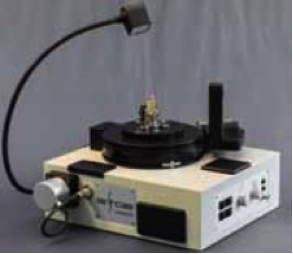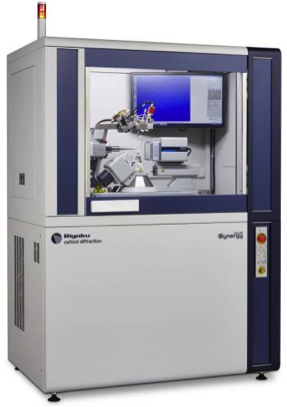November 30, 2018 -- X-ray Diffraction (XRD) is a non-destructive technique that probes properties of crystals, metallic solids and powders made of small-scale crystals. In XRD, a beam of x-rays is directed at the sample.

The X-ray diffractometer has three main components including the x-ray tube, a sample holder, and an x-ray detector. As the x-ray is produced in the tube, electrons encase the sample material. X-ray spectra will be generated with wavelengths characteristic of the sample material. Because x-ray wavelengths are of roughly the same size as the interatomic spacings of the crystals, diffraction of the waves occurs. Due to the regularities inherent in a crystal structure, x-rays are diffracted at various angles with different intensities. The overall pattern of these diffracted x-rays can be mathematically inverted to determine the crystal structure of the sample. The diffractogram can also be compared to a known library in order to identify the compound present in the crystal.

This technology is typically used to uncover unidentified crystalline materials. XRD is based on the principle that each material has a unique atomic arrangement and crystal structure, thus the diffraction pattern will vary material to material, similar to a fingerprint. For that reason, XRD is critical for research in environmental science, material science, and geology. XRD refers to the general method of diffraction using x-ray particles, however, this technology can be broken down into more specific techniques. The largest segment is x-ray powder diffraction. Single crystal XRD and residual stress XRD are also used.
X-ray powder diffraction (XRPD) is a rapid technique to identify an unknown mineral. Individuals must collect a few tenths of a gram of the mineral and grind it into a fine powder. The fine powder is packed into a sample container for analysis. The data can be reduced to a list of peak positions and intensities and each dhkl will correspond to a family of atomic planes. If you are looking to resolve individual planes, you must use single crystal diffraction, not XRPD. Once the data is collected, one can reference an online database containing hundreds of thousands of diffraction patterns in order to identify their sample. Single crystal XRD is another technique used to provide specifics of the internal lattice of crystalline substances along with determining the bond angles and lengths. Today’s single crystal diffractometers use a charge-coupled device in order to convert X-ray photons into electrical signals for data analysis. Complete data collection could take up to 72 hours, however, the technique is non-destructive and provides detailed information on the sample.
Residual stress analysis is an essential component to quality control processes. During the manufacturing process, or over years of use, residual stress is placed on products. XRD systems can measure the residual stress without destroying the product. This will provide insight into the products average lifetime and strength. XRD is a preferred choice for identification and quantification of crystalline materials. Follow along for the remainder of our atomic spectroscopy series where we will talk about other techniques such as organic elemental analyzers and inductively coupled plasma mass spec.
What do you think?
Have you worked with X-ray diffraction before? What are your pros and cons of the technology? Join the discussion below in the Forums!
Copyright © 2018 scienceboard.net


